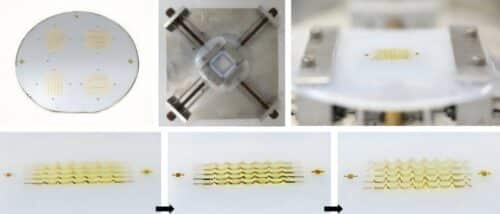What if your body movements could power your devices? Is it possible with the new wearable energy harvester? Find out more!

A research team from the Department of Robotics and Mechatronics Engineering (DGIST) has developed a three-dimensional, stretchable piezoelectric energy harvester capable of converting body movements into electrical energy. This device, designed as a wearable energy harvester, can be attached to the skin or clothing.
Energy harvesters typically fall into two categories: those that utilize the triboelectric effect and those that rely on the piezoelectric effect. The device created by the team operates on the piezoelectric effect, generating electricity through physical activities such as skin stretching or joint movement.
While several studies have explored piezoelectric energy harvesters, most rely on organic or composite-based piezoelectric materials with low energy efficiency. This limitation makes generating sufficient power from body movements challenging, hindering their potential as wearable energy devices.
The device developed by the team uses lead zirconate titanate (PZT), a material known for its high piezoelectric efficiency. While PZT offers excellent performance, it is typically complex and brittle, making it unsuitable for stretchable applications. To overcome this, Prof. Jang’s team designed a three-dimensional PZT structure resistant to deformation, enabling high energy efficiency and stretchability.
The team also introduced a novel curvature-specific coupling electrode design, which divides the electrodes into separate sections to prevent the device’s electrical energy cancellation. This innovation resulted in an energy efficiency 280 times greater than traditional stretchable piezoelectric energy harvesters.
The researchers stated that developing the efficient stretchable piezoelectric energy harvester technology is a significant research achievement. They also noted that the technology is expected to be useful after commercialization and could lead to the practical application of wearable energy harvesters.
Reference: Junwoo Yea et al, Curvature-Specific Coupling Electrode Design for a Stretchable Three-Dimensional Inorganic Piezoelectric Nanogenerator, ACS Nano (2024). DOI: 10.1021/acsnano.4c09933






